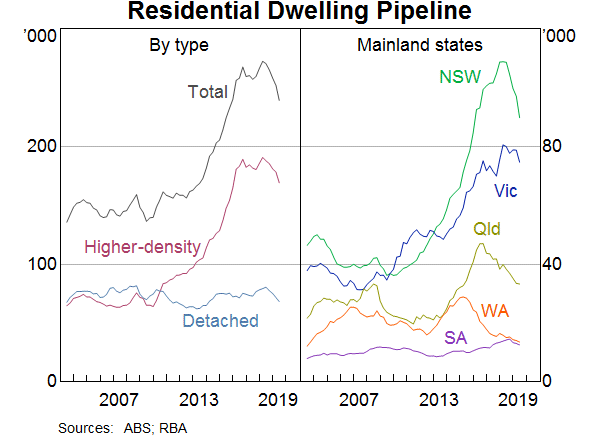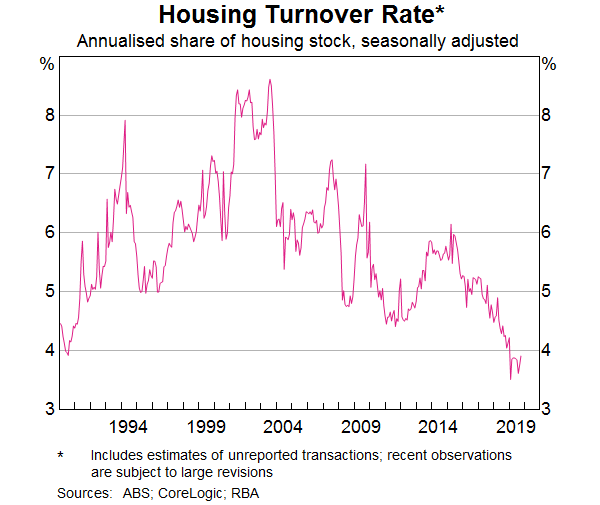2020 to be the low year for residential construction: RBA's Guy Debelle
The RBA have said there is a sizeable downturn in construction underway.
"Contacts in the Bank's liaison program indicate that demand for new houses and apartments has remained around the low levels of late 2018", RBA Deputy Governor Guy Debelle's said when he addressed the CFA Societies Australia Investment Conference in Sydney.
"The typical lags between the sale and construction of new dwellings imply that the decline in dwelling investment will continue for some time, despite the recent signs of stabilisation in the established housing market," Debelle noted.
Debelle admitted the RBA were surprised at the decline in construction activity, with 2020 now looking to be the low year for the residential construction sector.
"Given the large size of the pipeline, we had expected construction activity to remain at a pretty high level for most of this year, but it turned down sooner and by more than we had expected," Debelle said on Thursday morning.
"Even so, much of the downturn in construction activity is still ahead."

He said long lead times on higher-density construction mean the supply response is likely to be slow, and the tight conditions on lending to developers may mean it is even more protracted.
The housing construction cycle clearly turned down at the end of last year, which brought to an end a long upswing at the national level that started in 2012, Debelle stated.
Debelle did add however that the RBA can "see through the trough to the other side."
"Demand is still continuing to increase given population growth," Debelle said.
He said that the recent price turned in Melbourne and Sydney will probably bring investors back into the market.
Debelle believes investors left the market due to falling house prices, more so than the impact of tighter lending conditions.
He suggested it was possible that the 11 and 15 per cent declines in Melbourne and Sydney triggered some demand, as well as lower mortgage rates and APRA's changes to the interest rate threshold.
Housing Turnover Rate
Housing turnover decline to historically low levels earlier in the year before a slight uptick in recent months.

" In the past, housing prices and turnover have moved in lock step so it has been difficult to determine the impact of each channel," Debelle said.
"But with prices starting to grow again now, but turnover so far only picking up a little from its lows, we may get a better sense of which has been the bigger drag on consumption – wealth or turnover – and hence what the outlook for consumption might be now the housing price cycle has turned."
Debelle concluded his speech by saying that inflation and unemployment were a big concern.
"Unemployment is a little higher than it was at the beginning of the year, and there has not been much upward pressure on wages.
"In turn, this has contributed to the extended run of inflation outcomes below the medium-term target range.
"As a result, the Board has decided to ease monetary policy in recent months.
"We are seeking to make more assured progress towards both full employment and the inflation target."
